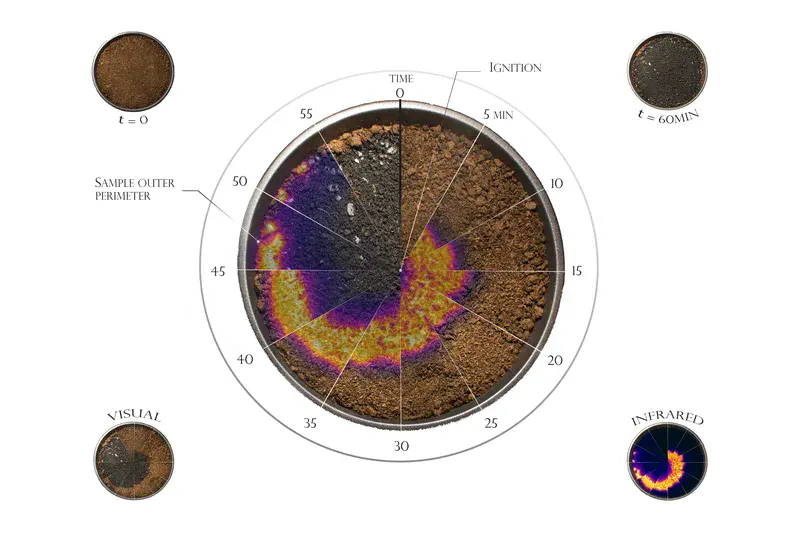
Fire Watch Constellation
Authors: Egle Rackauskaite, Xinyan Huang and Guillermo Rein (HazeLab, Imperial College London)
The Winner of the Best Fire Science Image, 11th IAFSS Symposium, Christchurch, New Zealand, 2014
This composite shows a constellation of combined visual and infrared imaging of a smouldering combustion front spreading radially over a thin sample of dry peat. The central watch is created by a series of twelve wedges. Each wedge is extracted from a photo taken every 5 min from an elevated view looking down into the sample during the one-hour lab experiment. The circular peat sample (D=22 cm) was ignited on the centre by an electrical heater. The average radial spread rate was 10 cm/h and the peak temperature 600°C. The top figures show the virgin peat (left) and the final residue (right). The bottom figures show the wedges in visual (left) and infrared (right) imaging. Smouldering combustion is the driving phenomenon of wildfires in peatlands, like those causing haze episodes in southeast Asia and Northeast Europe. These are the largest fires on Earth and an extensive source of greenhouse gases, but poorly studied. Our experiments help to understand this emerging research topic in climate-change mitigation by characterizing the dynamics of ignition, spread and extinction, and also measure the yield of carbon emissions.
Featured on GeoLog, the official blog of the European Geosciences Union
Category
Location
Colours
Image properties
7500 × 5000 px;
image/jpeg; 4.6 MB
Taken on 10
December
2013
Submitted on 8 July 2014
Licence
Creative Commons Attribution-NonCommercial-NoDerivs 3.0 Unported (CC BY-NC-ND 3.0)
Credit
Egle Rackauskaite (distributed via imaggeo.egu.eu)
Share
Appreciate
Report